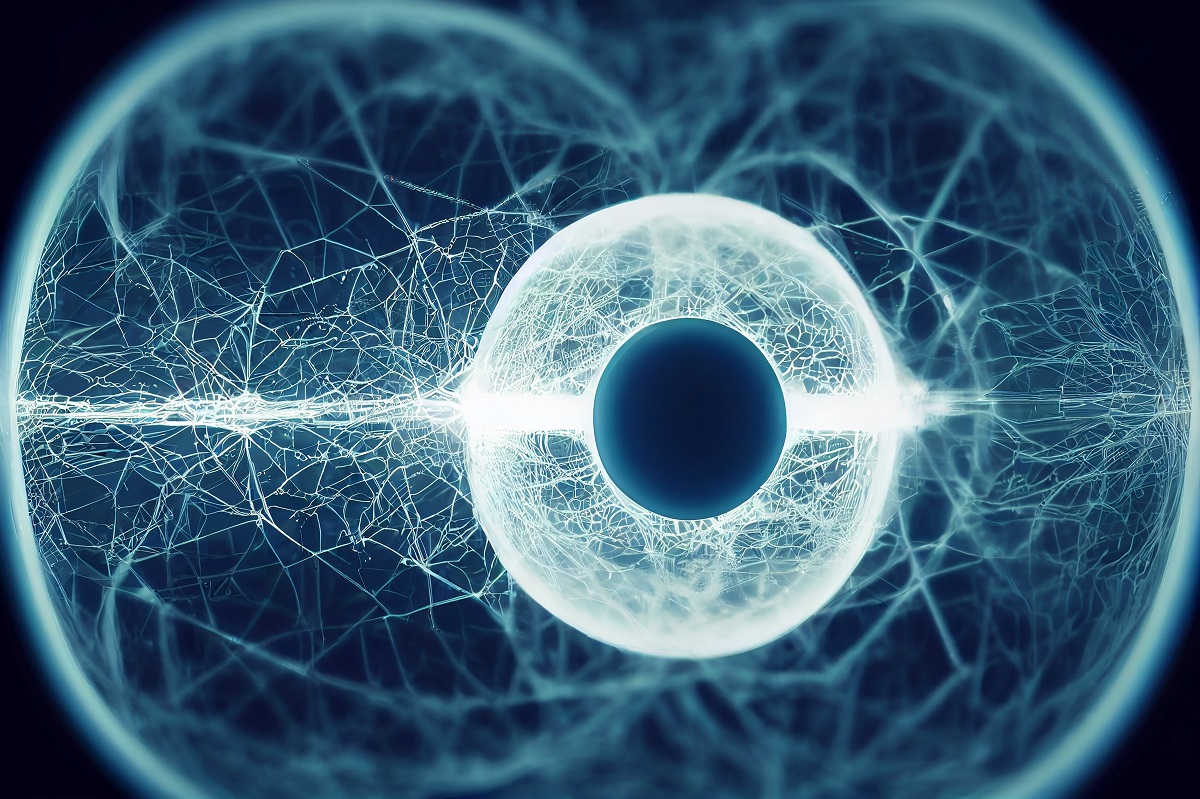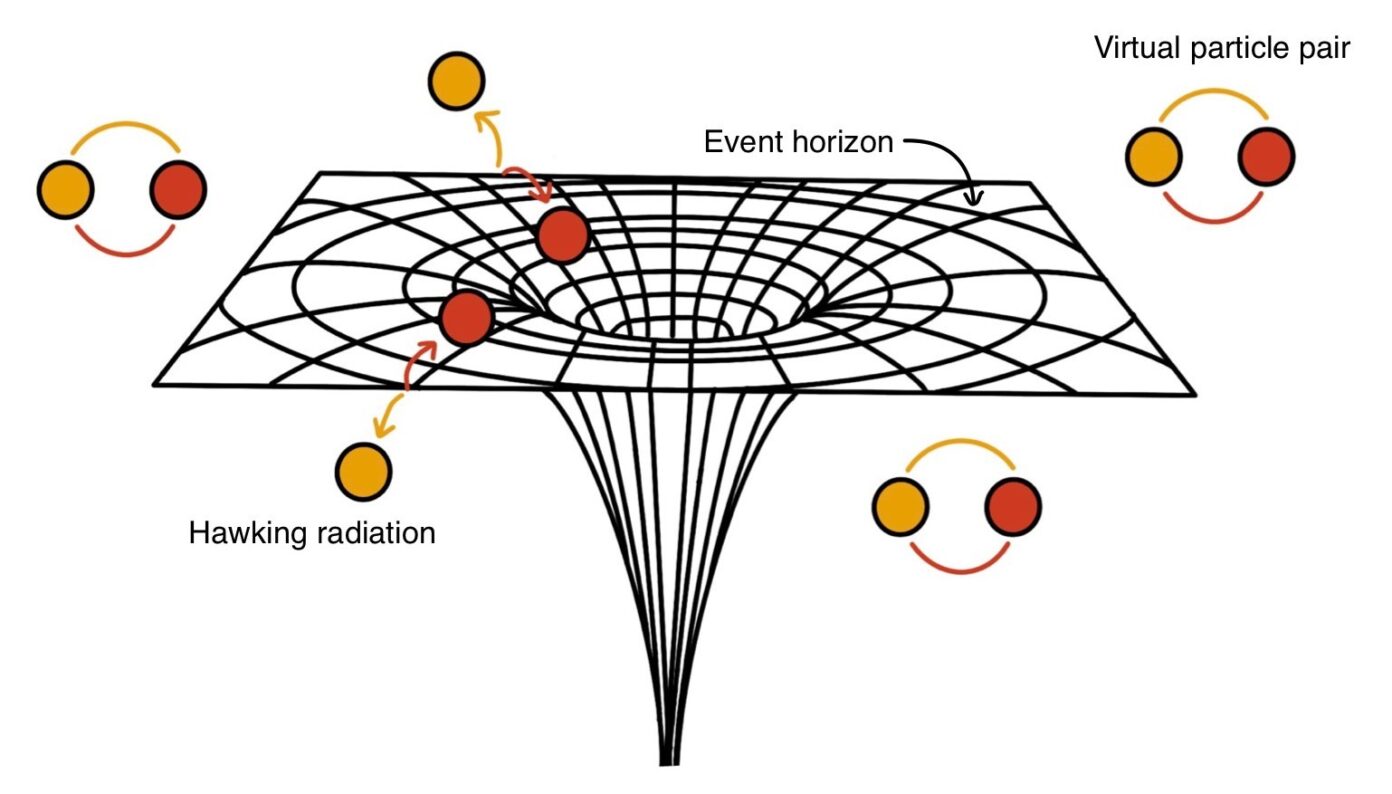
After Newton and Einstein, the theory of gravity has not yet reached its final state and must now face a new challenge: the quantum world.
Modern physics relies on two central theories: one which is important on large scales and describes gravity and the resulting dynamics of massive objects, called General Relativity (GR), and another which is important on (sub-) atomic scales and explains the behavior of small particles, called Quantum Mechanics (QM). They are both very successful theories and are well-supported experimentally. Why would anyone want to add something to the story? Everything seems to be working just fine – but unfortunately, that’s not the case. And physicists have been scratching their heads over this for the past decades.
Irreconcilable giants
General Relativity cannot be reconciled with Quantum Mechanics because GR is not applicable on such small scales and the theory breaks down. In extreme environments where both theories have non-negligible effects, such as in the vicinity of black holes, this poses a problem. More generally, there are many questions in modern physics that need answering where GR and QM currently fall short. How do quantum particles impact the curvature of spacetime? Is there a quantum particle that acts as a force mediator for gravity? How can we better understand the interior of black holes, these extreme astrophysical objects that are so popular yet so mysterious?
Our understanding of GR and QM as separate theories seems to have reached its limit. This does not, however, mean that we have to throw everything away and start over. It simply means that GR and QM are not the end of the story. We need to find a theory that extends our theory of gravity to the quantum scale. This new version of gravity is called Quantum Gravity (QG).
A quantum interlude on black holes
Let us now take a moment to explain how black holes, these extreme and still poorly understood objects, are perfect examples of why we need Quantum Gravity to begin with. In 1974, famous physicist Stephen Hawking discovered, through tedious theoretical calculations, that black holes should emit radiation, later coined Hawking radiation. This phenomenon combines gravity and quantum physics, and Hawking’s calculations opened the path toward a reconciliation of the two realms.
Skipping over technical details, here is an intuitive way of thinking about Hawking radiation. Imagine the vacuum as a soup of virtual particles popping in and (immediately) out of existence. They appear in pairs: they may have some energy, but since the particles very quickly disappear again, the time to measure that energy is too short. On scales that we can measure, energy is conserved. They are “virtual” particles because, to be “real”, a particle must have an energy that can be measured and not be so short-lived. However, when one of the particles from the virtual pair falls into a black hole, it can no longer recombine with its partner – it may at best recombine with a different particle inside the black hole, thus ‘erasing’ its energy. As a result of such a process, one particle can temporarily exist inside the black hole if it is captured by it, while the other particle can escape and travel the Universe, resulting in radiation that may one day reach us. This is demonstrated in the figure below.

The prediction of Hawking radiation is a very solid prediction, but it remains an approximate theoretical result. To better understand this phenomenon, and its underlying implications, we need a theory of Quantum Gravity!
The odd one out
There are a multitude of proposed theories that aim at redefining gravity and describing gravitational fields in a quantum framework, and this collection of theories is what we currently call Quantum Gravity. But how do we know that we need to review GR, and not QM? Gravity is one of the four fundamental forces/interactions of physics, along with electromagnetism, the weak nuclear force, and the strong nuclear force. On the other hand, Quantum Mechanics, and its more fundamental “parent” theory, Quantum Field Theory (which states that particles are only excitations of an underlying quantum field), is a framework that we can use to describe such interactions and the particles that are subject to them. Gravity is the only one of the four fundamental forces that cannot be successfully described in this framework, and this is exactly the problem. In other words: our current theory of gravity fails to describe its microscopic origin and, specifically, the way that quantum particles can bend spacetime.
An ever-evolving theory
The theory of gravity has gone through many makeovers over the centuries. We have all been told the stories of Galileo dropping objects from the Leaning Tower of Pisa, the apple falling on Newton’s head, or how the genius of Einstein and his theory of relativity revolutionized our understanding of space and time. And these are not the only scientists and theories that attempted to describe gravity. Gravity has been through many paradigm shifts – as does every theory in science.
Any new paradigm builds on the previous ones and is inspired by where its predecessors were successful, and most importantly, where they failed. As physicists, and scientists in general, we traditionally build our understanding from things that we can see and experience. This is our primary source material. We mostly build theories from the ground up, in the sense that we first develop a theory that correctly describes and predicts what we see on a “surface level”. Then, we realize that it has shortcomings, and we develop another theory, a more general one. The previous theory is often understood to be only a specific limit of the more general theory. In practice, things tend to get a bit messier, but in essence, this is the natural cycle that most scientific theories go through. This is why you still learn about Newtonian gravity in high school, and why it is still applied as an approximation in areas of physics where using General Relativity would be an overkill. GR is indeed more cumbersome to apply, and in many situations, it adds only negligible corrections to the final result.
A quantum makeover
We are at the edge of another paradigm shift in the theory of gravity. General Relativity needs to be reviewed, corrected, expanded, or even re-imagined, to allow for quantum effects. As Newtonian gravity is only an approximation of General Relativity in the case of low speed and weak gravitational field, GR should also only be an approximation of a more fundamental Quantum Gravity theory which would be applicable to all scales, including quantum scales.
This field of research is very active, and theoretical physicists have constructed various approaches to the problem. The main elements that we know should be combined into QG are the following: we expect some particle (a “graviton”) to carry the gravitational interaction (as for other fundamental forces in QM), and we expect gravitational interactions to be related to the geometry of spacetime (as explained by GR).
One popular theory is Loop Quantum Gravity, pioneered by Abhay Ashtekar in 1986, because it solves the most problems without creating too many others. Loop quantum gravity is derived from the treatment of gravity as a geometric property of spacetime, rather than as a force. In this theory, spacetime itself has an atomic structure and is composed of an extremely fine network of finite loops. This provides us with the quantum description and behavior of spacetime which is lacking in GR. Some other theories even aim to unify all fundamental forces into a single framework, although this is not strictly required by Quantum Gravity. This is known as a “Theory of Everything”. One of the most popular of these approaches to QG is String Theory, where we think of point-like particles as really being tiny one-dimensional strings.
What now?
The theory of gravity is thus in a new era, and many theoretical physicists are looking for a suitable successor to Einstein’s theory of General Relativity. Though there are some favorites, there is not enough evidence yet to declare the winner of this new Quantum Gravity paradigm shift, and the search continues!